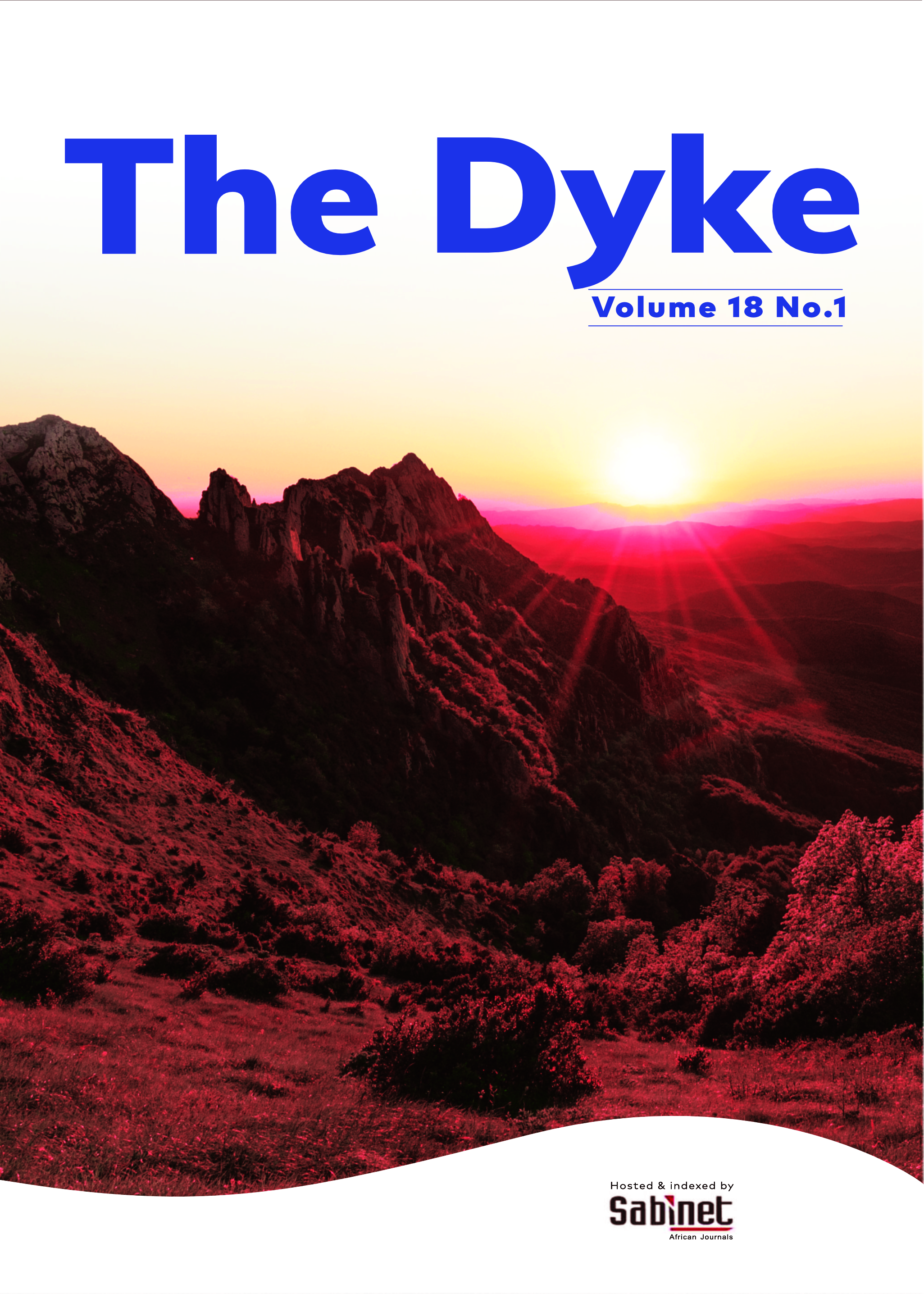A critical review of compensation challenges for occupational diseases among Zimbabwean ex-miners to the Witwatersrand, 2018-2021
DOI:
https://doi.org/10.64754/thedyke.v18i1.405Abstract
This study investigates historical and contemporary challenges faced by Zimbabwean ex-miners in securing compensation on occupational diseases contracted in South African gold mines. Zimbabwean labour migrancy to South Africa was brokered by the Witwatersrand Native Labour Association (WNLA) and was placed on various mines in Transvaal and the Orange Free State. South African gold mines frequently repatriated sick miners in a way that was considered to be the industry’s medication system. Repatriation of sick miners was a capitalist method of avoiding compensating miners who had contracted diseases like Tuberculosis and silicosis. Contemporary obstacles to compensation are hinged on legal challenges, administrative hurdles and the effects of COVID-19. This paper fills an academic void on the lives of former migrant miners and the compensation challenges they face. The study gleaned information from WNLA documents archived at the University of Johannesburg, Zimbabwean newspapers, oral testimonies of ex-miners, secondary literature on South African labour history and the Tshiamiso Trust website.
References
AD1715, WNLA Annual Report for the Year Ended 31 December 1959. SAIRR 1892-1974.
Badenhorst, C., & Mather, C. (1997). Tribal recreation and recreating tribalism: Culture, leisure, and social control on South Africa's gold mines, 1940–1950. Journal of Southern African Studies, 23(3), 473-495.
Blanche, M. T., Durrheim, K., & Painter, D. (2006). Research in practice: Applied methods in the social sciences. Cape Town, South Africa: University of Cape Town Press.
Bloch, A. (2005). Doing surveys. In C. Seale (Ed.), Researching society and culture (pp. 145-156). London, England: Sage Publications.
Breckenridge, K. (1998). The allure of violence: Men, race, and masculinity on the South African gold mines, 1900–1950. Journal of Southern African Studies, 24(4), 669-693.
Chanock, M. (2001). The making of South African legal culture. Cambridge, England: Cambridge University Press.
Creswell, J. W. (2014). Research design: Qualitative, quantitative, and mixed methods approaches. Thousand Oaks, CA: Sage Publications.
Denzin, N. K., & Lincoln, Y. S. (2005). Introduction: The discipline and practice of qualitative research. In The SAGE handbook of qualitative research (pp. 1-19). Thousand Oaks, CA: Sage Publications.
Fair Planet. (2020). COVID-19: A double threat to sick ex-South African gold miners. Retrieved from https://www.fairplanet.org.
Harington, J. S., McGlashan, N. D., & Chelkowska, E. Z. (2004). A century of migrant labour in the gold mines of South Africa. The Journal of The South African Institute of Mining and Metallurgy, 104(2), 65-72.
Ivankova, N. V., Creswell, J. W., & Plano Clark, V. L. (2007). Foundations and approaches to mixed methods research. In K. Maree (Ed.), First steps in research(pp. 255-278). Pretoria, South Africa: Van Schaik Publishers.
Khothari, C. R. (2004). Research methodology: Methods and techniques. New Delhi, India: New Age International Limited Publishers.
Mashiri, M. (2021, April 2). [Interview by J. Sibanda]. Masvingo, Zimbabwe.
Maxwell, J. A. (1996). Qualitative research design: An interactive approach. Thousand Oaks, CA: Sage Publications.
McCulloch, J. (2009). Counting the cost: Gold mines and occupational disease in contemporary South Africa. African Affairs. Oxford, England: University of Oxford Press.
McCulloch, J. (2012). South Africa’s gold mines and the politics of silicosis. Oxford, England: James Currey.
Mlambo, A. S. (2010). A history of Zimbabwean migration to 1990. In J. Crush & D. Tevera (Eds.), Zimbabwe’s exodus: Crisis, migration, survival (pp. 52-73). Kingston, Canada: Southern African Migration Programme.
Moodie, T. D. (2005). Maximum average violence: Underground assaults on the South African gold mines, 1913–1965. Journal of Southern African Studies, 31(1), 41-60.
Mpedi, L. G., & Nyenti, M. (2013). Portability of social security benefits in the mining sector: Challenges experienced by former mineworkers in accessing social security benefits in selected Southern African countries. Pretoria, South Africa: Southern
Africa Trust.
News24. (2019). Court approves historic R5bn settlement in silicosis saga. Retrieved from https://www.news24.com.
Ncube, G. T. (2012). The early history of wage labour and worker consciousness in north-western Zimbabwe, 1898–1940. The Dyke, 6(3), 1-25.
Sibanda, J. (n.d.). Migrant labour and mining in South Africa: The Witwatersrand Native Labour Association and Rhodesian miners, 1954–1977. Unpublished MA Dissertation. University of South Africa.
Smith, M. J. (1993). Working in the grave: The development of health and safety systems on the Witwatersrand gold mines. Grahamstown, South Africa: Rhodes University.
Taylor-Garcia, D. V. (2011). Decolonial historiography: Thinking about land and race in a transcolonial context. Tensions Journal, 5, 10-25.
The Chronicle. (2019). ‘Ex-Wenela workers to receive pensions’. Retrieved from https://www.chronicle.co.zw
Tshiamiso Trust. (2020). Compensation guidelines. Retrieved from https://www.tshiamisotrust.com
UJSC WNLA Circular – No. 91/46. (1946, April 11).
Welman, C., Kruger, F., & Mitchell, B. (2005). Research Methodology (3rd ed.). Cape Town, South Africa: Oxford University Press.
Zulu, T. (2021, April 3). [Interview by J. Sibanda]. Bulawayo, Zimbabwe.

Downloads
Published
How to Cite
Issue
Section
License
All articles in The Dyke are published under the Creative Commons Attribution 4.0 International License (CC BY 4.0).
Under this licence:
- Others may copy, redistribute, remix, transform, and build upon the work for any purpose, even commercially.
- Appropriate credit must be given to the original author(s) and source (The Dyke), along with a link to the license.
- Any changes made must be indicated.
Full licence details: https://creativecommons.org/licenses/by/4.0/
Archiving and Preservation
The Dyke supports long-term preservation of scholarly work through partnerships with digital repositories and indexing services, including Sabinet African Journals. Authors are also encouraged to deposit a copy of their published article in institutional or subject-specific repositories.




